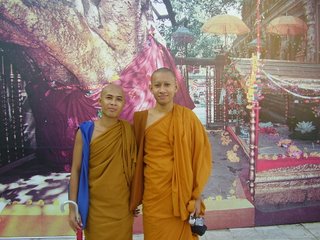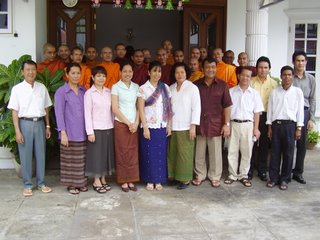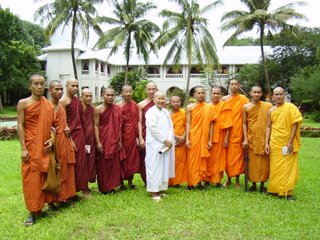
This is default featured slide 1 title
Go to Blogger edit html and find these sentences.Now replace these sentences with your own descriptions.
This is default featured slide 2 title
Go to Blogger edit html and find these sentences.Now replace these sentences with your own descriptions.
This is default featured slide 3 title
Go to Blogger edit html and find these sentences.Now replace these sentences with your own descriptions.
This is default featured slide 4 title
Go to Blogger edit html and find these sentences.Now replace these sentences with your own descriptions.
This is default featured slide 5 title
Go to Blogger edit html and find these sentences.Now replace these sentences with your own descriptions.
Saturday, September 16, 2006
My friends in Myanmar

Sunday, September 10, 2006
My trip in Siem Reap
Saturday, September 09, 2006
Dedication ceremony in Myanmar








According to Khmer tradition, during the 15 days starting from the 8th up to 22nd of September,2006, we have a Dedication Ceremony called Bjum Ben in Khmer language. Around the world where have khmers are residing, we have never missed to celebrate in order to dedicate the meritorious deeds to our own ancestors who had gone away. Similary, Khmer Embassy located in Myanmar also hold this ceremony and all Cambodian students at International Theravada Buddhist Missionary University are invited to join in this ceremony.
Wednesday, September 06, 2006
Shwe daw pagoda



This is a shwe daw pagoda where is nearby my university.The Buddha's teeth have been enshrined here so it is the sacred place for all Buddhists to worship all the time to make merits. The foolish are attached to the world and also conquered by it. The clever analyze the world and benefit by knowing its facts. The wise seach for the state beyond the world,manage and live freely.
Khmer student

His name is SONG,who is studying at Buddhist High School, Aung Toung, Battambang, Cambodia.
He is from Siem Reap province.
The foolish estimate man's value by his conduct, they understand only the action.
The clever estimate man's value by his power.they understand only partly.
The wise estimate man's value by his purity, they perceive the innermost core of life.
Sunday, September 03, 2006
Khmer-french nun visits khmer students

In Myanmar, there are many meditation centers which are so interested for all meditators from local and abroad. Similarly, Khmer-french nuns, who are so trusted on Buddhism, had made meditation for 3 months. During her staying here she always visited the lives of Cambodian students in University,Myanmar.
Buddhism and Cambodian Society


Buddhism and Cambodian Society
First of all, I would like to introduce the
All the Cambodian kings dedicated their lives for the sake of promoting and propagating their religion. Under the patronage of the former king, His Majesty Norodom Sihanouk Varman (Narottama Siha hanu Varman) who just abdicated last year(2003), once became a monk in order to be free from bringing about all reform in his kingdom, and especially with the vigorous guidance of His holiness Samdech Preah Sangharaja– Maha Sumedhadhipati ( Chuon Nath), the late supreme patriarch of Mahanikaya Buddhist sect, Cambodia has made a rapid progress in organization the education of the religious order and in propagating the Faith among the laity.
In 1914, the government opened, in
To achieve this program of religious instruction in
Among the ten volumes published in Pali and translation (1938 – 1954) are the Abhidhammattha Sangaha (1938), the Visuddhimagga (1946), Bhikkhupatimokkha
( 1950), Mangalatthadipani (1952), and the Abhidhammapitaka and the Sattappakarana Abhidamma ( 1953), not fewer than 187 volumes, mostly on religious subjects, have been published in the Cambodian language by the various libraries and institutions. Thus,
Senior members of the monastic order take part in newly all state ceremonies and observances. In turn, the government protects the land and revenues of the order, gives financial support to the maintenance of the monasteries, promotes the monastic education and fosters Buddhist teaching in schools and on radio and TV program.
The Oath of allegiance ceremony in which loyalty was pledged to the king was superseded by a government sponsored Constitution Day in which religious ceremonies had prominent places.
The Hierarchical system of monastic activities is kept under careful supervision and good discipline maintained among the quarter million monks and novices. The administrative structure of the order in
The ministry of religious affair looks like as special secretary general for the monastic order. The ministry oversees the budget of the monastic order and assists the officers of the order with their administrative duties.
The heads of sangha in
Buddhist temples are always the most beautiful and ornate building in the village. The interior walls of the temple often are covered with mural painting, door and windows are decorated with intricate designs of foliage and devotes in gold against background of or black lacquer and eaves and gables are adorned with wood carving. Mosaic of porcelain and colored glass often covered the pillars, the altars and sometimes portions of the wall of Vihara. The balustrades are frequently made in the form of Naga with the heads serving for newel points. Figure of the Devas and animals are sometime set above the bases of Cetiya or of temple libraries. Considerable artistry is devoted to the roofs, which highly decorated gables. Within the images of Buddha of various sizes, some of metal, bronze, gold or silver, others of stone or crystal or of brick covered with mortar and plaster and surfaced with gold leaf.
In the former years, every young man was expected to spend at least a few months in the monastic order to make merit for oneself and others and to study religious subject (Buddhism). This practice has diminished somewhat because of the competition of economic and educational goals for young men today.
Cambodia, however, accept their religion as heritage of belief, teaching and custom, which in time of rejoicing or death, meet emotional needs and provides answers to the mysteries of life. It supplies as doctrine of man, metaphysics, a moral law and an ultimate goal. For daily life, it provides ways for making merit for self and others, devotional exercises austerities, ascetic, enjoyment and assurance of safety and good fortune by ways of devotion, good conduct, amulets and verbal mantras.
The followers did not formulate the teachings but came to require of religion such answers and rites as Buddhism could provide. Gifts taken to the monasteries are usually carried on silver tray or in silver bowls. It has heavily been ornamented in espouse. the weaver’s skill has like wise, been devoted to the temple and result may be seen in long sloth banners with hang in temple, in special robes for imaged, in cloth bags gives to the monks for carrying scripture and small objects, and in ornate fans which mark the ecclesiastical rank of the Bhikkhus or monks. The art of the scribe has been exercised in making ollas sacred palm leaf books with character in Cambodian inscribed with a stylus, then inked, and the whole bound between ornate covers decorated with gold.
During its long residence in
For centuries before
In
The public schools are conducted in monasteries, formerly religious instruction in accordance with the tenets of Buddhism was provided for all government schools. In addition, the textbooks including materials on social behavior to meet the present day condition were also provided. Larger monasteries with from fifty to five hundred resident monks and novices living depending upon the character and enterprise of the abbot. Large and well run monastery has a Vihara or temple to worship as the principle building, an Uposatha building of similar design for ecclesiastic rites, one or more Cetiyas or stupas and numerous of huts for monks and pavilions of Sala for lay visitors.
The pattern of relationship between monks and laity is in effect reciprocal and as far as the merit making is concerned, economic cost of supplying the sangha with food, gifts and other necessary is great. The rich and highly ranking devotees are expected to contribute their wealth for upkeep of the monasteries and the monks proportionately more than are the poor, but this seems not to be the case. It has been observed that the poor too, tend to spend a larger proportion of their income on making merit than their wealthier neighbors do. Here as they think that they would like to offset the previous evil or bad deed, which caused their poverty in these very lives. The poor also believe that a larger proportion of economic expenditure on merit making that they have spent as a kind of investment, and will lead to bigger accumulation of merit and greater enhancement of well being.
As observance, the most meritorious deed that Cambodian consider, are in descending order of importance as following:
- Becoming a novice (samanera).
- Becoming a monks (high ordination or Uppasampada)
- Contributing enough money for the construction of monastery.
- Having a son ordained as a monk.
- Making excursion to Buddhist shrines throughout the country.
- Making contributions toward the reparation of the monastery.
- Offering food daily and on the Sabbath day.
- Attending the monastery on all the Sabbath day and observing the eight precepts (Uposatha Sila).
- Observing the five precepts all the time.
- Offering money and cloths to the monks on Kathina ceremony.
- Attending ceremonies on Visaka full moon day.
- Offering food and cloths to the monks on Pchum Ben Day (ceremony which Cambodian celebrates for dedicating wholesome deed to those who passed away or Peta).
- Celebrating and making merit during the Khmer New Year, etc…
Anyhow, Buddhist ceremonies in
Buddhism today has become dominant creed in
- His Majesty King Norodom Sihanouk Varman (the former king who abdicated last year).
- His highest Prince Norodom Ranariddh, the president of the National Assembly.
- His highest Prince Norodom Sirivuddh, the vice Prime Minister and minister of ministry of interior.
- His Excellency, Chea Sim, the president of the Senate.
- His Excellency, Dr. Sam Rangsy, the leader of the opposition Sam Rangsy party.
These are few names among them who had been, once time or another, monks in their lives. This clearly proves that
Reference:
1. History of Theravada Buddhism in South East Asia, by K.L. Hazra,
2. Pali literature of South East Asia, by Ven. Dr. H. Saddhatissa, London, 1990.
3. Samantappanha, by Ven Viriyadharo Say Amnann, Buddhist Institute Publication,
4. Encyclopedia, Britannica Library, 2005.
Thiri Mangala in Myanmar


The formal title of this pagoda " Thiri Mangala kaba aye cetido" the title incorporates the term for auspiciousness and would peace as it has been built in dedication to the realization of auspiciousness and peace for the people of Myanmar as well as people from all parts of the world and those that come to worship it.
khmer student

My name is Douk dom..nick name yin chamnan sex M age 22 years.

The foolish are so overbearing, they leave no space to any improvement.
The cleaver is willing to learn and practice everything, but can never learn all.
The wise never consider themselves the best, but always perform to their best naturally.
E mail: seb_savoeun84happy@hoo.com
Khmer student

His name is SEN SETH, who is studying at final year of
Since Buddhism is founded on reasoning knowledge,compassion and wisdom, it encourages each and every person to have a critical outlook by himself, reason with his own experiments and to have free thoughts, free choice. It also guides one to strive with his own effort for the progress of one's mature life because one is solely responsible for one's own destiny and salvation. Having understood all these, he tries to the utmost to study Buddhism for the common benefits.
Khmer student in Cambodia

His name is VOEURN SOPOUN from Banteaymeancheay, Cambodia. He is at Grade 12 in
Knowing that the sense of person bases on the education with optimistically training to deliver what the phenomena is , he exert constant effort to go deeply in searching both general knowledge and Buddhism to achieve potential stages of own study. His E-mail : voeurnsopoun@yahoo.com.





















